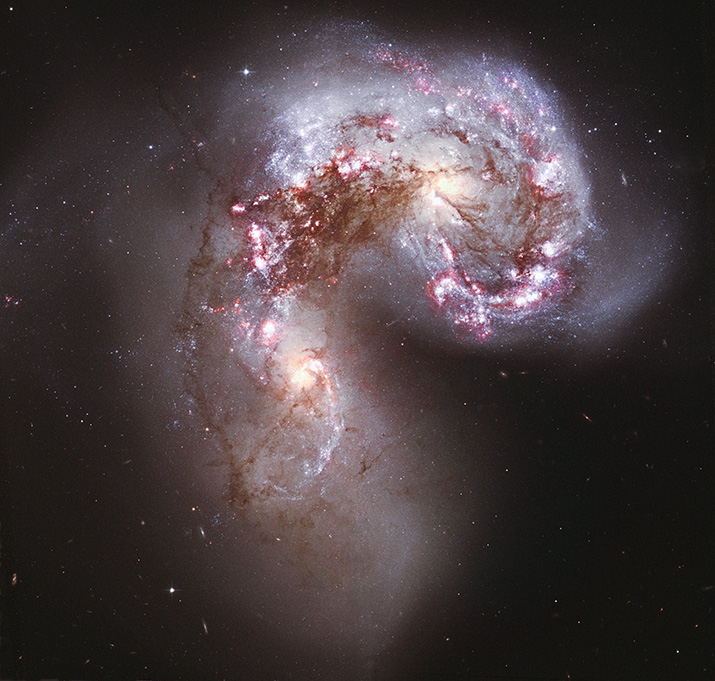
|
Processed Aug. 7, 2012 by Donald Waid Images from the Hubble Legacy Archive Camera: ACS - Filters: Red (f814w) & (f658n) Green (f555w) Blue (f435w) Click on the image below to view at higher resolution. --> |
|
The image above is of two galaxies in the process of merging. (NGC 4038 and 4039) This galactic collision is commonly know as the Antennae Galaxies. The name is derived from long tidal tails, not shown on this image, extending from each of the galaxies. A wide, ground based, image displaying this feature may be viewed here. Shock waves generated by mutual gravitational interaction have spawned intense stellar genesis across both galaxies. These areas of stellar birth are surrounded by red regions of ionized hydrogen. The two galaxies were initialy spiral in formation and, after the merger is complete, the resulting galaxy will be elliptical in form. This is thought to be the fate of our own Milky Way when it merges with our neighboring Andromeda galaxy in about 4 billion years. Revised distance estimates place the Antennae Galaxies approximately 45 million light years from the Earth. The galaxies lie in the constellation of Corvus. This image was assembled with data obtained from the Hubble Legacy Archive. Three wide band filtered images were used for the red, green and blue channels. These were imaged using filters of f814w and f658n for red, f555w for green and f435w for blue. An image consisting of a combination of the filters was used for the luminance channel. This combined image is classified in the Hubble Legacy Archive as a detection, or white light, image. The color image was created as a standard LRGB image.
1Based on observations made with the NASA/ESA Hubble Space Telescope, and obtained from the Hubble Legacy Archive, which is a collaboration between the Space Telescope Science Institute (STScI/NASA), the Space Telescope European Coordinating Facility (ST-ECF/ESA) and the Canadian Astronomy Data Centre (CADC/NRC/CSA). |
